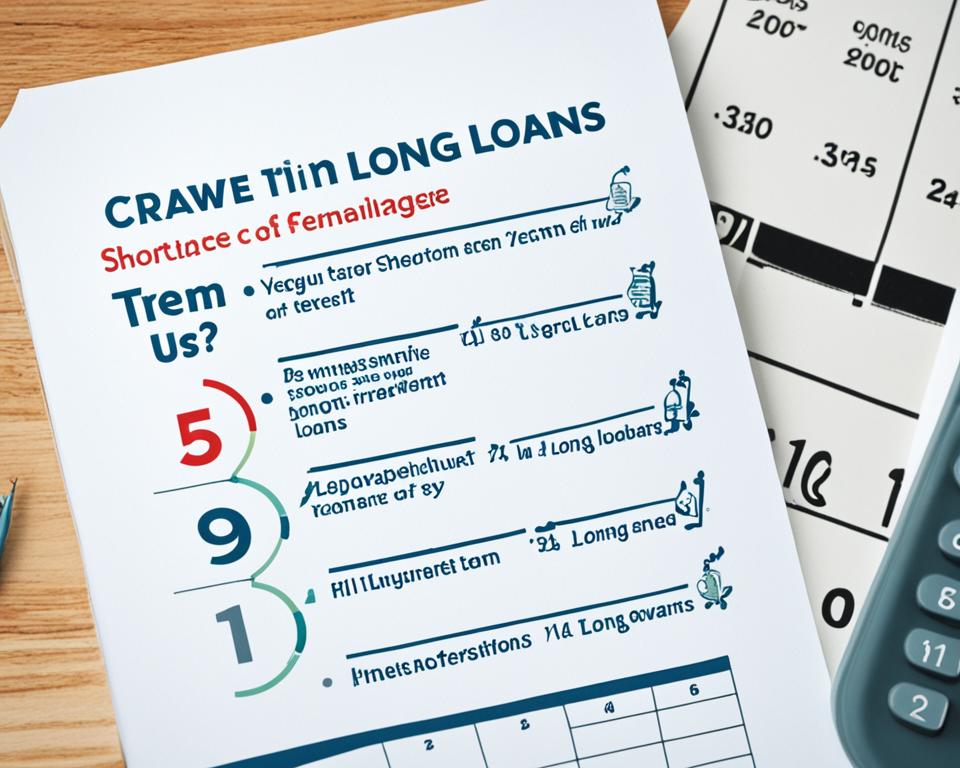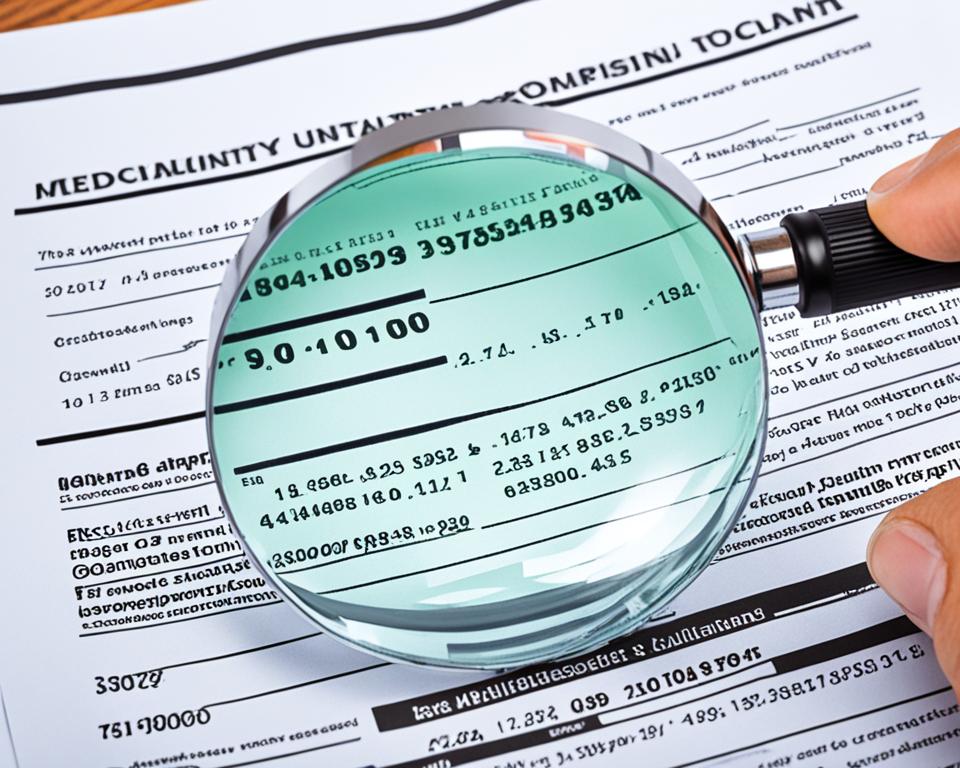When it comes to borrowing money, there are two common options to consider: short-term loans and long-term loans. Each option has its advantages and disadvantages, and it’s important to understand them before making a decision. In this article, I will discuss the pros and cons of short-term vs. long-term loans and provide insights to help you choose the right option for your financial needs.
Short-term loans typically have a repayment period of less than one year, while long-term loans can extend for several years. The shorter repayment period of short-term loans means that you can pay off the debt faster and potentially save on interest charges. These loans are ideal for emergency expenses or urgent financial needs, as they provide quick access to funds. In addition, short-term loans often have less stringent eligibility requirements, making them more accessible to borrowers with lower credit scores.
On the other hand, long-term loans offer their own set of advantages. The extended repayment period gives you more time to pay off the debt, resulting in smaller monthly payments that are more manageable for your budget. This makes long-term loans a suitable option for larger expenses such as buying a house or starting a business. Long-term loans also provide stability and predictability as you know exactly how much you need to repay each month for an extended period.
When comparing short-term and long-term loans, interest rates play a significant role. Short-term loans often have higher interest rates compared to long-term loans. While this means you may pay more in interest over the short term, it also means you can repay the loan faster and potentially save on overall interest charges. On the other hand, long-term loans typically have lower interest rates, but you may end up paying more in interest over the extended repayment period.
The total cost of a loan includes not only the interest charges but also any additional fees and charges associated with the borrowing process. Short-term loans generally have lower total costs as you pay off the debt quickly. However, long-term loans may have higher total costs due to the longer repayment period and the accumulation of interest over time. It’s important to consider your financial situation and evaluate the total cost of the loan when deciding between short-term and long-term options.
Short-term loans offer more flexibility in terms of repayment as the loan is paid off quickly. You can free up your cash flow faster and have the option to take out another loan if needed. In contrast, long-term loans may offer more flexibility in terms of the loan amount and repayment schedule. You can access a larger loan amount and spread out your payments over a longer period, making it more manageable for your budget.
When choosing between short-term and long-term loans, there are several factors to consider. Your financial goals, repayment capabilities, and the purpose of the loan should all be taken into account. Short-term loans are suitable for immediate financial needs and borrowers who can afford higher monthly payments. Long-term loans, on the other hand, are appropriate for larger expenses and borrowers who prefer lower monthly payments over an extended period.
In conclusion, short-term and long-term loans have their pros and cons. The right option for you depends on your specific circumstances and borrowing needs. Consider factors such as interest rates, total cost, flexibility, and repayment capabilities when making your decision. And remember, always borrow responsibly and evaluate your ability to repay the loan before taking on any debt.
Key Takeaways:
- Short-term loans have a shorter repayment period and can be suitable for emergency expenses and urgent financial needs.
- Long-term loans provide stability and more manageable monthly payments, making them ideal for larger expenses.
- Short-term loans often have higher interest rates but can help you save on overall interest charges by repaying the loan faster.
- Long-term loans typically have lower interest rates, but you may end up paying more in interest over the extended repayment period.
- Consider your financial goals, repayment capabilities, and the purpose of the loan when choosing between short-term and long-term options.
Benefits of Short-Term Loans
Short-term loans offer a range of benefits that make them an attractive option for borrowers. Whether you’re facing unexpected expenses or need fast access to funds, short-term loans can provide a quick and convenient solution. Let’s explore the advantages of choosing a short-term loan:
- Quick access to funds: Short-term loans are designed to provide borrowers with immediate access to the money they need. When faced with emergencies or urgent financial needs, having the ability to secure funds quickly can be invaluable.
- Shorter repayment period: As the name suggests, short-term loans come with a shorter repayment period compared to long-term loans. This means that borrowers can pay off their debt faster, allowing them to become debt-free more quickly.
- Potential interest savings: Because short-term loans have a shorter repayment period, borrowers have the opportunity to save on interest charges. By paying off the loan swiftly, they can minimize the overall interest costs incurred.
- Accessible for borrowers with lower credit scores: Short-term loans often have less stringent eligibility requirements, making them accessible to borrowers with lower credit scores. This can be helpful for individuals who may not qualify for traditional loans due to their credit history.
Overall, short-term loans provide a convenient and flexible solution for borrowers who require immediate funds and prefer a faster repayment timeline. They offer a range of benefits that cater to different financial needs and situations.
Benefits of Long-Term Loans
Long-term loans offer a range of advantages that make them a popular choice for borrowers. One key benefit is the extended repayment period, which provides borrowers with more time to pay off their debt. This longer timeframe results in smaller monthly payments, making them more manageable for individuals on a budget.
Notably, long-term loans are particularly beneficial for financing larger expenses such as buying a house or starting a business. With a longer repayment period, borrowers have the flexibility to spread out their payments over time, reducing the immediate financial burden.
In addition to the favorable repayment structure, long-term loans provide stability and predictability. Borrowers have a clear understanding of how much they need to repay each month for an extended period. This allows for better financial planning and ensures that borrowers can meet their payment obligations consistently.
With long-term loans, borrowers can benefit from smaller monthly payments, making them suitable for larger expenses. The extended repayment period provides stability and predictability, allowing for effective financial planning.
Overall, the advantages of long-term loans include:
- Extended repayment period
- Smaller monthly payments
- Flexibility for larger expenses
- Stability and predictability
These advantages make long-term loans a valuable option for individuals seeking financial support for significant endeavors.
| Benefits | Explanation |
|---|---|
| Extended Repayment Period | Provides more time to pay off the debt. |
| Smaller Monthly Payments | More manageable for borrowers on a budget. |
| Flexibility for Larger Expenses | Allows borrowers to finance significant endeavors. |
| Stability and Predictability | Enables effective financial planning and consistent payments. |
Pros and Cons of Short-Term vs. Long-Term Loans: Interest Rates
When comparing short-term and long-term loans, interest rates play a significant role. Short-term loans often have higher interest rates compared to long-term loans. While this means borrowers may pay more in interest over the short term, it also means they can repay the loan faster and potentially save on overall interest charges. On the other hand, long-term loans typically have lower interest rates, but borrowers may end up paying more in interest over the extended repayment period.
Short-Term Loans
With short-term loans, the higher interest rates can be a disadvantage. Borrowers may need to accommodate larger monthly payments due to the shorter repayment period. However, the advantage lies in the ability to pay off the loan quickly and potentially save on overall interest charges. This makes short-term loans suitable for those who prefer to settle their debts in a shorter time frame and have the financial means to handle higher monthly payments.
Long-Term Loans
Long-term loans offer lower interest rates, which can be an advantage for borrowers seeking lower monthly payments over an extended period. However, the downside is that borrowers may pay more in interest over the life of the loan. Long-term loans are ideal for individuals who require a larger loan amount and prefer a more manageable monthly payment structure.
“The higher interest rates of short-term loans may discourage some borrowers, but the potential savings from faster repayment can outweigh the additional interest charges.”
To illustrate the comparison between short-term and long-term loan interest rates, here is a table showcasing hypothetical loan terms:
| Loan Type | Loan Amount | Interest Rate | Repayment Period | Total Interest Paid |
|---|---|---|---|---|
| Short-Term Loan | $10,000 | 7% | 1 year | $700 |
| Long-Term Loan | $10,000 | 4% | 5 years | $2,000 |
Note: The table above is for illustrative purposes only and does not reflect actual loan terms or interest rates.
As shown in the table, the short-term loan with a higher interest rate of 7% results in a total interest payment of $700 over one year. In contrast, the long-term loan with a lower interest rate of 4% accumulates a total interest payment of $2,000 over five years. While the short-term loan incurs less interest overall, the monthly payments for the long-term loan are significantly lower.
Ultimately, borrowers must consider their financial situation, loan repayment goals, and budget when evaluating the pros and cons of interest rates for short-term vs. long-term loans. It is essential to weigh the potential savings from faster repayment against the advantage of lower monthly payments over an extended period.
Pros and Cons of Short-Term vs. Long-Term Loans: Total Cost
The total cost of a loan includes not only the interest charges but also any additional fees and charges associated with the borrowing process. When comparing short-term and long-term loans, evaluating the total cost is crucial in making an informed decision.
Short-term loans generally have lower total costs due to the shorter repayment period. Borrowers can pay off the debt quickly, resulting in fewer interest charges and fees. This can be advantageous for individuals who want to minimize their overall borrowing costs.
On the other hand, long-term loans may have higher total costs. The extended repayment period can lead to the accumulation of more interest charges and fees over time. While the monthly payments may be lower, borrowers need to consider the impact of the prolonged borrowing period on the total cost of the loan.
When deciding between short-term and long-term loans, borrowers should carefully evaluate their financial situation and priorities. Short-term loans can provide cost savings in terms of total repayment, but borrowers need to ensure they can afford higher monthly payments. Long-term loans offer lower monthly payments but may result in a higher total cost over time.
To illustrate the difference in total costs between short-term and long-term loans, let’s consider an example:
| Loan Type | Loan Amount | Interest Rate | Repayment Period | Total Cost |
|---|---|---|---|---|
| Short-Term Loan | $10,000 | 10% | 12 months | $10,833.33 |
| Long-Term Loan | $10,000 | 8% | 36 months | $11,162.21 |
Based on this example, the short-term loan has a lower total cost of $10,833.33 compared to the long-term loan with a total cost of $11,162.21. However, it is essential to consider individual financial circumstances and preferences when deciding on the loan term.
Factors to Consider:
- Financial capability: Can you afford higher monthly payments with a short-term loan, or do you prefer lower but extended monthly payments with a long-term loan?
- Borrowing goal: Do you need funds for an immediate expense or a long-term investment?
- Total cost assessment: Evaluate the interest charges, fees, and repayment terms to determine the total cost of each loan option.
By carefully weighing these factors and considering the total cost, borrowers can make an informed decision when choosing between short-term and long-term loans.
Pros and Cons of Short-Term vs. Long-Term Loans: Flexibility
When considering short-term and long-term loans, one key factor to evaluate is the flexibility they offer. Short-term loans provide borrowers with more flexibility in terms of repayment due to their shorter loan duration. This means that borrowers can pay off the loan quickly and free up their cash flow faster. In addition, if the need arises, borrowers have the option to take out another short-term loan to meet immediate financial needs.
“Short-term loans offer borrowers the advantage of quickly paying off the debt and accessing funds faster.”
On the other hand, long-term loans offer a different kind of flexibility. These loans provide borrowers with the option to access a larger loan amount and spread out their payments over a longer period. This can make the monthly payments more manageable for borrowers on a tight budget.
“Long-term loans provide the flexibility of borrowing a larger amount and stretching out payments.”
However, it is important to consider the potential downsides of each option. While short-term loans offer quick repayment and flexibility, they often come with higher interest rates. This means that borrowers may end up paying more in interest charges over the short term.
On the other hand, long-term loans provide lower monthly payments and may have lower interest rates. However, borrowers may end up paying more in overall interest charges due to the extended repayment period.
Ultimately, the decision between short-term and long-term loans depends on your specific financial situation and goals. Consider whether you prioritize quick repayment and access to funds or prefer smaller monthly payments and a longer loan duration. It is important to carefully weigh the pros and cons of flexibility in short-term vs. long-term loans before making your decision.
Pros and Cons of Flexibility in Short-Term vs. Long-Term Loans:
| Pros of Short-Term Loans | Cons of Short-Term Loans |
|---|---|
|
|
| Pros of Long-Term Loans | Cons of Long-Term Loans |
|
|
Choosing Between Short-Term and Long-Term Loans
When deciding between short-term and long-term loans, there are several factors to consider. These factors will help you make an informed decision based on your financial goals, repayment capabilities, and the purpose of the loan.
- Financial Goals: Determine your short and long-term financial goals. Are you looking for a quick solution to meet immediate financial needs, or do you have larger expenses in mind?
- Repayment Capabilities: Assess your ability to make monthly payments. Short-term loans typically require higher monthly payments, so ensure you can comfortably meet these obligations. On the other hand, long-term loans offer lower monthly payments over an extended period, providing more flexibility for your budget.
- Purpose of the Loan: Consider the purpose of the loan. Short-term loans are suitable for immediate financial needs, such as covering emergency expenses or unexpected bills. Long-term loans are more appropriate for larger expenses like purchasing a property or starting a business.
“Choosing the right loan option depends on your specific circumstances and borrowing needs.”
By evaluating these factors, you can determine whether a short-term or long-term loan aligns better with your financial situation and goals. Remember, there is no one-size-fits-all solution, so take the time to consider your options carefully.
Example: Factors to Consider When Choosing Between Short-Term and Long-Term Loans
| Factors | Short-Term Loans | Long-Term Loans |
|---|---|---|
| Repayment Period | Less than one year | Several years |
| Monthly Payments | Higher | Lower |
| Financial Goals | Immediate needs | Long-term expenses |
| Purpose | Emergency expenses | Large purchases or investments |

Assessing these factors and understanding the differences between short-term and long-term loans will guide you toward choosing the loan option that best suits your financial circumstances and future plans.
Differences Between Short-Term and Long-Term Loans
Short-term and long-term loans have distinct differences that borrowers should consider when choosing the right loan option. One significant difference is the repayment period. Short-term loans typically have a shorter repayment period of less than a year, while long-term loans extend for several years.
Another difference between these two loan types is the interest rates. Generally, short-term loans tend to have higher interest rates compared to long-term loans. While borrowers may pay more in interest over the short term with a short-term loan, they have the advantage of repaying the loan faster and potentially saving on overall interest charges.
The total cost of the loan is also a distinguishing factor. Short-term loans generally have lower total costs as borrowers pay off the debt quickly, while long-term loans may have higher total costs due to the longer repayment period and the accumulation of interest over time.
Flexibility is another aspect where short-term and long-term loans differ. Short-term loans offer more flexibility in terms of repayment since the loan is quickly paid off, allowing borrowers to free up their cash flow faster and potentially take out another loan if needed. On the other hand, long-term loans may offer more flexibility in terms of the loan amount and repayment schedule, making it more manageable for borrowers with larger expenses.
Below is a comparison table that outlines the key differences between short-term and long-term loans:
| Differences | Short-Term Loans | Long-Term Loans |
|---|---|---|
| Repayment Period | Short, typically less than a year | Extended, several years |
| Interest Rates | Higher rates | Lower rates |
| Total Cost | Lower total costs | Higher total costs |
| Flexibility | More repayment flexibility | More loan amount and repayment flexibility |
Understanding the differences between short-term and long-term loans can help borrowers make an informed decision based on their financial goals and circumstances.
When to Use Short-Term Loans
Short-term loans can be a valuable financial tool in certain situations. Here are some suitable scenarios where short-term loans can provide assistance:
- Emergency Expenses: When unexpected financial emergencies arise, such as medical bills or car repairs, short-term loans can offer quick access to funds.
- Unexpected Bills: If you have an unexpected bill that needs to be paid immediately, a short-term loan can help bridge the temporary cash flow gap until your next paycheck.
- Immediate Financial Needs: Short-term loans can be beneficial when you need immediate funds for a specific purpose, such as covering rent or utility bills.
By considering these situations, borrowers can determine whether a short-term loan aligns with their immediate financial needs. However, it’s crucial to carefully evaluate your ability to repay the loan within the short repayment period and take into account the higher interest rates associated with short-term borrowing.
“Short-term loans provide a quick and accessible solution for those unexpected financial bumps in the road. They offer the flexibility and convenience needed in emergency situations, allowing borrowers to meet their immediate financial needs.”
– Emily Thompson, Financial Advisor
When to Use Long-Term Loans
Long-term loans can be a valuable financial tool in specific situations when borrowers require a larger loan amount or have long-term financial goals. Here are some suitable situations for utilizing long-term loans:
- Purchasing a Property: Buying a house or investing in real estate often requires a substantial amount of money. Long-term loans provide borrowers with the necessary funds to make these significant purchases, allowing them to spread out the repayment over an extended period and make more manageable monthly payments.
- Starting a Business: Entrepreneurs and business owners may need substantial capital to start or expand their ventures. Long-term loans offer a flexible financing option, enabling entrepreneurs to access the funds they need and repay the loan gradually as their business grows.
- Funding Higher Education: Pursuing higher education can be costly, but long-term loans can help students and their families cover the expenses. With lower monthly payments, long-term loans can provide financial relief and make education more accessible without overwhelming immediate financial responsibilities.
Long-term loans provide borrowers with the benefit of lower monthly payments, allowing them to manage their budget more effectively. However, it’s important to be mindful of the potential higher total cost associated with long-term borrowing.
| Factors to Consider | Pros | Cons |
|---|---|---|
| Lower Monthly Payments | Provides financial flexibility | May result in higher total cost |
| Extended Repayment Period | Allows for manageable monthly payments | Accrues more interest over time |
| Access to Larger Loan Amounts | Enables funding for significant expenses | Requires careful budgeting and planning |
Conclusion
When considering the choice between short-term and long-term loans, it is crucial to carefully evaluate the pros and cons of each option based on your unique financial situation and goals.
Short-term loans provide the advantage of quick access to funds, making them ideal for addressing immediate financial needs. They offer a shorter repayment period, allowing borrowers to pay off the debt faster and potentially save on interest charges. Short-term loans are also more accessible for borrowers with lower credit scores.
On the other hand, long-term loans offer stability and more manageable monthly payments, making them a suitable option for larger expenses such as buying a house or starting a business. The extended repayment period allows borrowers more time to pay off the debt and budget accordingly. However, it’s important to consider that long-term loans may have lower interest rates but could lead to higher total costs over time.
In conclusion, choosing the right loan option depends on various factors, including interest rates, total cost, flexibility, and repayment capabilities. It’s essential to assess your specific circumstances and borrowing needs before making a decision. Evaluate the advantages and disadvantages of short-term and long-term loans in relation to your financial goals, and select the loan option that aligns best with your needs.
FAQ
What are the pros and cons of each?
Short-term loans offer quick access to funds and faster repayment periods, while long-term loans provide stability and lower monthly payments.
What are the benefits of short-term loans?
Short-term loans provide quick access to funds, faster repayment periods, and are more accessible for borrowers with lower credit scores.
What are the benefits of long-term loans?
Long-term loans offer extended repayment periods, smaller monthly payments, and are suitable for larger expenses or long-term financial goals.
What are the pros and cons of interest rates for short-term vs. long-term loans?
Short-term loans often have higher interest rates but can save on overall interest charges, while long-term loans have lower rates but may result in higher overall interest payments.
What are the pros and cons of the total cost of short-term vs. long-term loans?
Short-term loans generally have lower total costs, while long-term loans may have higher total costs due to the longer repayment period and accumulation of interest over time.
What are the pros and cons of the flexibility in short-term vs. long-term loans?
Short-term loans offer more flexibility in terms of cash flow and the option to take out another loan, while long-term loans provide flexibility in the loan amount and repayment schedule.
What factors should I consider when choosing between short-term and long-term loans?
Consider your financial goals, repayment capabilities, and the purpose of the loan to make the right decision between short-term and long-term loans.
What are the differences between short-term and long-term loans?
Short-term loans have shorter repayment periods, higher interest rates, and lower total costs, while long-term loans have extended repayment periods, lower interest rates, and potentially higher total costs.
When should I use short-term loans?
Short-term loans are suitable for emergency expenses, urgent financial needs, or when immediate access to funds is required.
When should I use long-term loans?
Long-term loans are ideal for larger expenses, such as purchasing property, starting a business, or funding long-term financial goals.
Conclusion
The right loan option depends on your specific circumstances and borrowing needs. Consider factors such as interest rates, total cost, flexibility, and repayment capabilities when making your decision.





